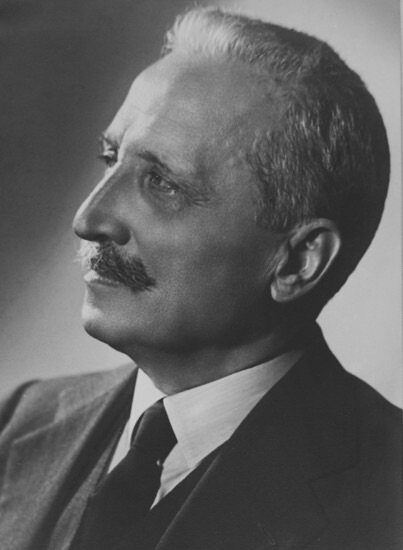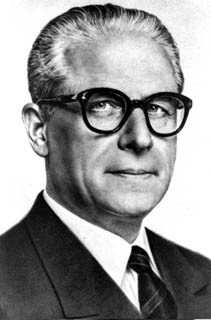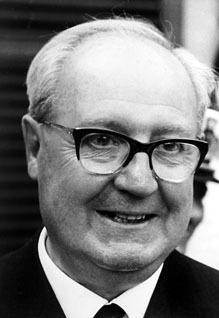|
Italian Presidential Elections
Italian presidential elections are held to elect the President of Italy. Elections Provisional head of state * 1946 Italian presidential election * 1947 Italian presidential election President of the Republic * 1948 Italian presidential election * 1955 Italian presidential election * 1962 Italian presidential election * 1964 Italian presidential election * 1971 Italian presidential election * 1978 Italian presidential election * 1985 Italian presidential election * 1992 Italian presidential election * 1999 Italian presidential election * 2006 Italian presidential election * 2013 Italian presidential election * 2015 Italian presidential election * 2022 Italian presidential election The 2022 Italian presidential election was held in Rome between 24 and 29 January 2022. The president of Italy was elected by a joint assembly composed of the Italian Parliament and regional representatives. The election process extended over mu ... References {{Italian presidential ... [...More Info...] [...Related Items...] OR: [Wikipedia] [Google] [Baidu] |
President Of Italy
The president of Italy, officially denoted as president of the Italian Republic ( it, Presidente della Repubblica Italiana) is the head of state of Italy. In that role, the president represents national unity, and guarantees that Italian politics comply with the Constitution. The president is the commander-in-chief of the Italian Armed Forces and chairs the High Council of the Judiciary. A president's term of office lasts for seven years. The incumbent president is former constitutional judge Sergio Mattarella, who was elected on 31 January 2015, and re-elected on 29 January 2022. Qualifications for office The framers of the Constitution of Italy intended for the president to be an elder statesman of some stature. Article 84 states that any Italian citizen who is fifty or older on election day and enjoys civil and political rights can be elected president. The article also states that the presidency is incompatible with any other office; therefore, the president-elect mu ... [...More Info...] [...Related Items...] OR: [Wikipedia] [Google] [Baidu] |
1946 Italian Presidential Election
The 1946 Italian presidential election was undertaken to elect a provisional head of the Italian State on 28 June 1946. Background After the departure of King Umberto II of Italy on 13 June 1946, following the abolition of the monarchy, the functions of head of state had provisionally been exercised by Prime Minister Alcide De Gasperi Alcide Amedeo Francesco De Gasperi (; 3 April 1881 – 19 August 1954) was an Italian politician who founded the Christian Democracy party and served as prime minister of Italy in eight successive coalition governments from 1945 to 1953. De Gas ..., to which he was entrusted until the beginning of July when, following election as Provisional Head of State, Enrico De Nicola was sworn in before the Constituent Assembly as president. They are not considered presidential elections, as this institution did not yet exist. However, De Nicola assumed this title according to the first transitional provision of the Constitution in 1948. Result ... [...More Info...] [...Related Items...] OR: [Wikipedia] [Google] [Baidu] |
1947 Italian Presidential Election
The 1947 Italian presidential election was undertaken to elect a provisional head of the Italian State. Background Enrico De Nicola submitted his resignation on 25 June 1947, officially for health reasons, but also to regain legitimacy after the annual term of the Constituent Assembly of Italy, to which even his term was tied, had expired. Enrico De Nicola, however, was still re-elected as Provisional Head of State on 26 June 1947. From 1 January 1948 he assumed the title of President of the Italian Republic in accordance with the first final provision of the Constitution of Italy The Constitution of the Italian Republic ( it, Costituzione della Repubblica Italiana) was enacted by the Constituent Assembly on 22 December 1947, with 453 votes in favour and 62 against. The text, which has since been amended sixteen times, .... Result References {{Italian presidential elections Presidential elections in Italy ... [...More Info...] [...Related Items...] OR: [Wikipedia] [Google] [Baidu] |
1948 Italian Presidential Election
The 1948 Italian presidential election was held in Italy on 10–11 May 1948. Luigi Einaudi, governor of the Bank of Italy and member of the Liberal Party, was elected President of Italy. Only members of newly elected Parliament were entitled to vote. The 1948 presidential election was the first one voted by a regular Parliament. Procedure In accordance with the new Italian Constitution, the election was held in the form of a secret ballot, with the Senators and the Deputies entitled to vote. The election was held at Montecitorio, home of the Chamber of Deputies, with the capacity of the building expanded for the purpose. The first three ballots required a two-thirds majority of the 900 voters in order to elect a president, or 600 votes. Starting from the fourth ballot, an absolute majority was required for candidates to be elected, or 451 votes. The election was presided over by the President of the Chamber of Deputies Giovanni Gronchi, who proceeded to the public counting of ... [...More Info...] [...Related Items...] OR: [Wikipedia] [Google] [Baidu] |
1955 Italian Presidential Election
The 1955 Italian presidential election was held in Italy on 28–29 April 1955. Giovanni Gronchi, President of the Chamber of Deputies, was elected President of Italy Only members of Parliament and regional delegates were entitled to vote, most of these electors having been elected in the 1953 general election. Procedure In accordance with the Italian Constitution, the election was held in the form of a secret ballot, with the Senators and the Deputies entitled to vote. The election was held in the Palazzo Montecitorio, home of the Chamber of Deputies, with the capacity of the building expanded for the purpose. The first three ballots required a two-thirds majority of the 843 voters in order to elect a president, or 562 votes. Starting from the fourth ballot, an absolute majority was required for candidates to be elected, or 422 votes. The election was presided over by the President of the Chamber of Deputies Giovanni Gronchi, who proceeded to the public counting of the votes, ... [...More Info...] [...Related Items...] OR: [Wikipedia] [Google] [Baidu] |
1962 Italian Presidential Election
The 1962 Italian presidential election was held in Italy on 2–6 May 1962. Only members of Parliament and regional delegates were entitled to vote, most of these electors having been elected in the 1958 general election. As head of state of the Italian Republic, the President has a role of representation of national unity and guarantees that Italian politics comply with the Italian Constitution, in the framework of a parliamentary system. It was the first time the official candidate of the Christian Democracy party was elected President of the Italian Republic. Procedure In accordance with the Italian Constitution, the election was held in the form of a secret ballot, with the Senators and the Deputies entitled to vote. The election was held in the Palazzo Montecitorio, home of the Chamber of Deputies, with the capacity of the building expanded for the purpose. The first three ballots required a two-thirds majority of the 854 voters in order to elect a president, or 570 votes ... [...More Info...] [...Related Items...] OR: [Wikipedia] [Google] [Baidu] |
1964 Italian Presidential Election
The 1964 Italian presidential election was held in Italy from 16 to 28 December 1964, following the resignation of President Antonio Segni on 6 December 1964 due to health problems. Only members of Parliament and regional delegates were entitled to vote, most of these electors having been elected in the 1963 general election. As head of state of the Italian Republic, the President has a role of representation of national unity and guarantees that Italian politics comply with the Italian Constitution, in the framework of a parliamentary system. Only on the twenty-first round of voting Giuseppe Saragat, the leader of Italian Democratic Socialist Party and former President of the Constituent Assembly, was finally elected President. Saragat was the first left-wing politician to become President of the Republic. Procedure In accordance with the Italian Constitution, the election was held in the form of a secret ballot, with the Senators and the Deputies entitled to vote. The elect ... [...More Info...] [...Related Items...] OR: [Wikipedia] [Google] [Baidu] |
1971 Italian Presidential Election
The 1971 Italian presidential election was held in Italy on 9–24 December 1971. Only members of Parliament and regional delegates were entitled to vote, most of these electors having been elected in the 1968 general election and in the 1970 regional elections. As head of state of the Italian Republic, the President has a role of representation of national unity and guarantees that Italian politics comply with the Italian Constitution, in the framework of a parliamentary system. On 24 December 1971 former Prime Minister and president of the Chamber of Deputies Giovanni Leone was elected president with 518 votes out of 1,008, the smallest majority ever obtained by an elected president. With twenty-three rounds of voting, this presidential election remains still today the longest presidential election in the Italian republican history. Procedure In accordance with the Italian Constitution, the election was held in the form of a secret ballot, with the senators and the deputi ... [...More Info...] [...Related Items...] OR: [Wikipedia] [Google] [Baidu] |
1978 Italian Presidential Election
The 1978 Italian presidential election was held in Italy between 29 June and 8 July 1978, following the resignation of incumbent President Giovanni Leone on 15 June 1978 because of the Lockheed bribery scandals. Only members of Parliament and regional delegates were entitled to vote, most of these electors having been elected in the 1976 general election and in the 1975 regional elections. As head of state of the Italian Republic, the President has a role of representation of national unity and guarantees that Italian politics comply with the Italian Constitution, in the framework of a parliamentary system. On 8 July 1978 former socialist partisan and President of the Chamber of Deputies Sandro Pertini was elected President with 832 votes out of 1,011, the biggest majority ever obtained by an elected president. Procedure In accordance with the Italian Constitution, the election was held in the form of a secret ballot, with the Senators and the Deputies entitled to vote. The ... [...More Info...] [...Related Items...] OR: [Wikipedia] [Google] [Baidu] |
1985 Italian Presidential Election
The 1985 Italian presidential election was held on 24 June 1985. Only members of Parliament and regional delegates were entitled to vote, most of these electors having been elected in the 1983 general election and in the 1985 regional elections. As head of state of the Italian Republic, the President has a role of representation of national unity and guarantees that Italian politics comply with the Italian Constitution, in the framework of a parliamentary system. As a result of the election, Francesco Cossiga was elected President on the first round with almost 75% of the votes. It was the first time in the history of the Italian Republic that a President had been elected on the first round. Procedure In accordance with the Italian Constitution, the election was held in the form of a secret ballot, with the Senators and the Deputies entitled to vote. The election was held in the Palazzo Montecitorio, home of the Chamber of Deputies, with the capacity of the building expanded ... [...More Info...] [...Related Items...] OR: [Wikipedia] [Google] [Baidu] |
1992 Italian Presidential Election
The 1992 Italian presidential election was held in Italy on 13–25 May 1992, following the resignation of President Francesco Cossiga on 28 April 1992. Only members of Parliament and regional delegates were entitled to vote, most of these electors having been elected in the 1992 general election and in the 1990 regional elections. As head of state of the Italian Republic, the president has a role of representation of national unity and guarantees that Italian politics comply with the Italian Constitution, in the framework of a parliamentary system. Procedure In accordance with the Italian Constitution, the election was held in the form of a secret ballot, with the Senators and the Deputies entitled to vote. The election was held in the Palazzo Montecitorio, home of the Chamber of Deputies, with the capacity of the building expanded for the purpose. The first three ballots required a two-thirds majority of the 1,014 voters in order to elect a president, or 676 votes. Start ... [...More Info...] [...Related Items...] OR: [Wikipedia] [Google] [Baidu] |
1999 Italian Presidential Election
The 1999 Italian presidential election was held on 13 May 1999. As a second-level, indirect election, only Members of Parliament and regional deputies were entitled to vote. Carlo Azeglio Ciampi was elected head of state of the Italian Republic, a role of representation of national unity and guarantee that Italian politics comply with the Constitution, in the framework of a parliamentary system. On 13 May, the former Prime Minister Carlo Azeglio Ciampi was elected on the first ballot with 707 votes. His term officially started with a swearing-in ceremony held on 18 May. Procedure According with the Italian Constitution, the election must be held in the form of secret ballot, with the Senators, the Deputies and 58 regional representatives allowed to cast their votes. When the 1999 election was held, the Senate counted 322 members and the Chamber of Deputies counted 630 members; the electors were in total 1010. The election is held in the ''Palazzo Montecitorio'', home of the ... [...More Info...] [...Related Items...] OR: [Wikipedia] [Google] [Baidu] |










